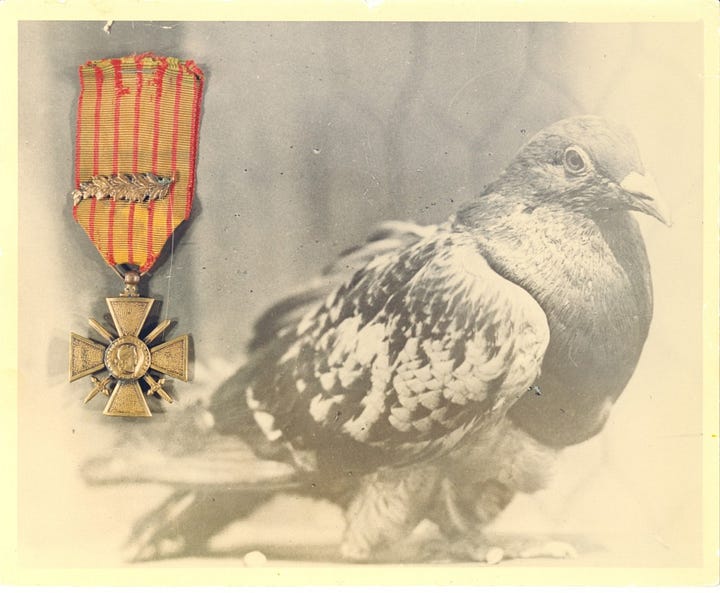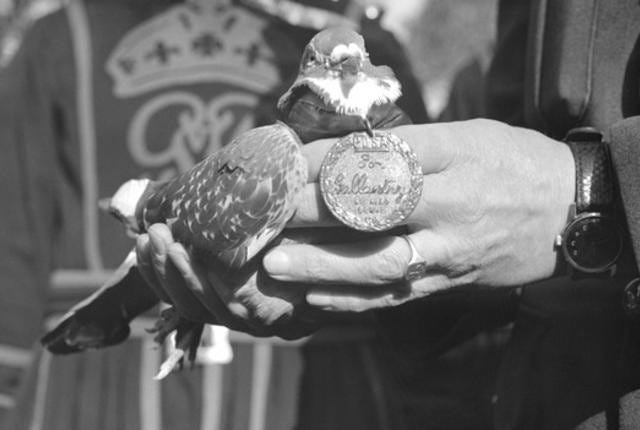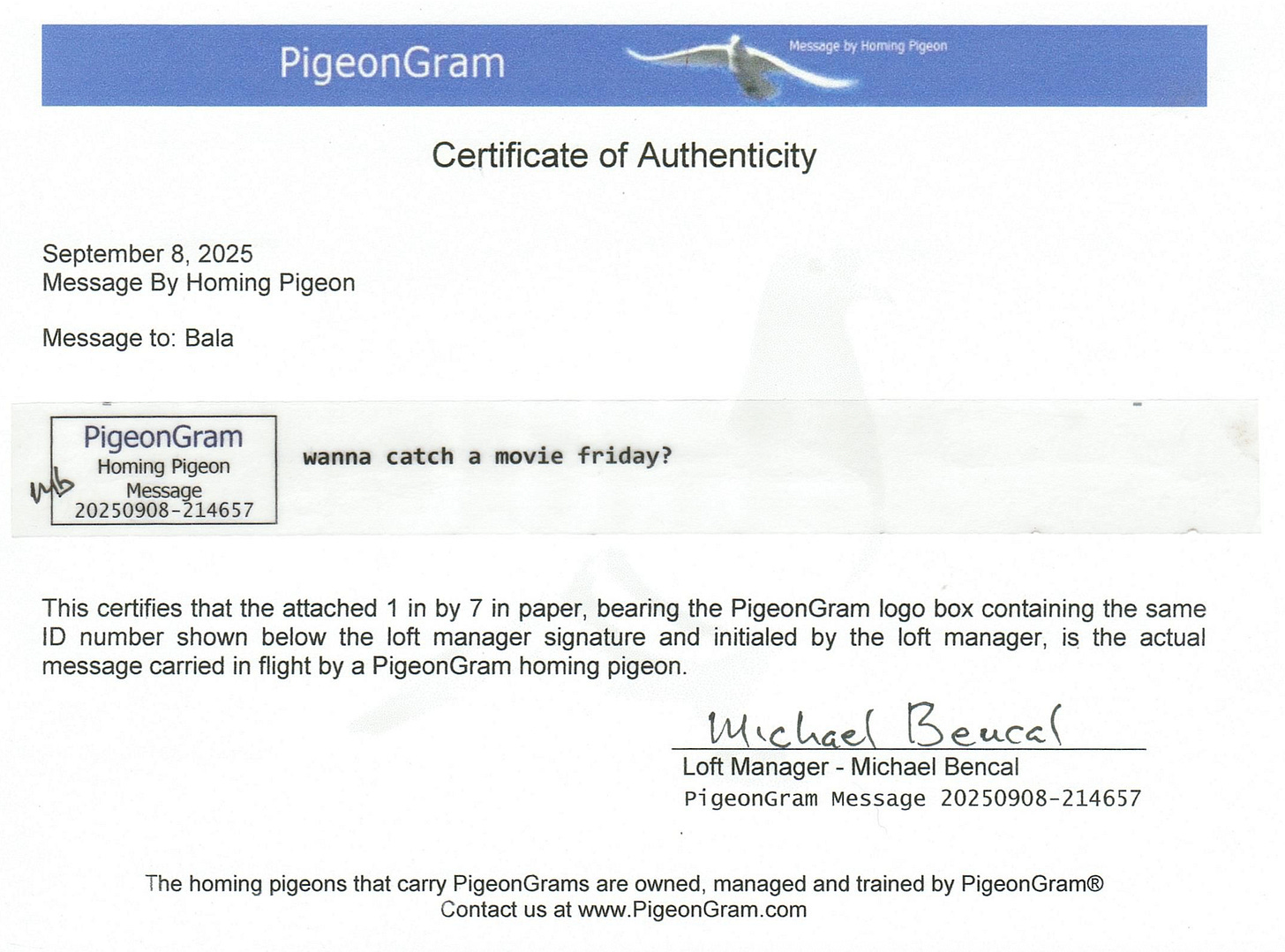He didn't text me back, so I sent a carrier pigeon
Did you know: the most treasured possession of the Smithsonian is a passenger pigeon named Martha?
There is really no good way of explaining why I spent an entire week figuring out where I could find a carrier pigeon, but I’m happy to report they still (kind of) exist.
This not-so-little rabbit hole began when my boyfriend (who, lovely as he is, never has his phone charged) left me on read for 20 minutes. Being the impatient and impossibly strong-willed person I am, I took matters into my own hands. One intrusive thought after another, I landed on pigeons.
It took an evening of sifting through reddit threads and mini-docs about pigeon-fanciers1 for me to find Pigeongram — a pigeon service in Texas, active since 2006.
The site looked like it hasn’t been touched in a decade. If there could be dust on a website, it would be the site’s font choice and awkward spacing. Endearing, I thought, how much this site screamed 2010. Pigeongram.com was definitely built from scratch.
I emailed the only address listed on the site to check if the service is still active and heard back instantly. The email read: can we hop on a call?
What I had assumed would be a 2-minute chat turned into a wonderful 30 minute conversation with Michael, the owner of the facility. Michael was warm and verbose. He had lived a former life as a pigeon racer. Birds have always been his passion.



He walked me through the somewhat counterintuitive premise of Pigeongram: you email Michael a message you want to send via pigeon. He prints it out, rolls it up, and attaches it to one of his dutiful messengers. The pigeon is then taken far away from it’s home, set free to fly back to the facility2 —where Michael waits to collect the delivered message before re-packaging it into an envelope. The message is ultimately snail mailed to the desired address, with a stamp that certifies it took flight.
Roughly 200 people use Michael’s service each year. While the birds don’t actually fly to each recipient, Michael insists that this service keeps the trade alive.
“They’re pretty small compared to the rest of the world,” Michael said, when I asked if he lets his birds fly long distances.
My message:
Of course, by the time my message was delivered, it was roughly four days late.
It only took 9 emails, a 30-minute phone call, and hours of internet sleuthing. Bala, the recipient of my message, and I did in fact catch a movie on Friday, just a week late.
Texting today reassures you that your message reached the recipient. The ‘Delivered’ subtext lets you know your message has been received. A little ‘Read’ label confirms the recipient has consumed the content delivered. We thrive on knowing the status of precisely everything — we track the location of our Amazon packages, analyze the progress of loading bars, download apps to check how far down a Resy waitlist we are.
Cliff Kuang and Robert Fabricant’s famous UX book, User Friendly: How the Hidden Rules of Design Are Changing the Way We Live, Work, and Play positions these feedback mechanisms as the key to modern user friendly experiences: “Feedback is what turns any man-made creation into an object that you relate to. Feedback is what turns information into action. They are the bones of our relationship with the world around us.”
When it comes to personal-to-person communication, we used to be blissfully unaware. There was a time where a honk outside your door was rude. Now, we obsess over who’s Liked or viewed our IG stories and where they rank on the list of views (apparently it corresponds with how often they view your profile).
Kyle Chayka’s Infinite Scroll lays it all out on last week’s NYer column on the inevitability of ghosting today:
“A letter returned to sender might be the result of a mistaken address; an unanswered voice mail might be the sign of a busy schedule. The online ghoster, however, is often caught in the act, their attention to the message signaled by a tiny checkmark showing they read it but did not write back. The ghosted feel omniscient but not omnipotent; technology has not yet invented a way to compel a response… these days, we’re haunted by knowing too much”
Along this vein, sending a message via pigeon gives you the gift of oblivion.
All the things I tell myself when expecting a belated response are much more likely to be true: she fell into the Hudson / he left his phone in a cab / my carrier pigeon lost their bearings. Anything can happen to a pigeon mid-flight. There was nothing I could do to confirm whether Bala got my message. I could comfortably blame the weather for his lack of a response.
For those skeptical, here is a certificate of authenticity from Pigeongram
The romance of carrier pigeons highlight how often we’re over-engineering things
My friend Alexus joked that I reminded him of Forest Whitaker’s character from Ghost Dog: The Way of the Samurai (1999), a quiet hitman who trains homing pigeons to stay in touch with his mafia master, Louie. I can see it, except I’ve never read Hagakure.
The seemingly primitive form of the pigeon also reminded me of that famous scene in the Bollywood hit 3 Idiots (2009), where a physics professor raved over the millions NASA spent developing a gravity-defying pen that could write in space only to be asked about pencils. Work smarter! Not harder!
The same way Kamala Harris wears wired earphones for security reasons, could carrier pigeons (barring air traffic and weather conditions) be a fairly secure way of communication? Whenever we communicate online, we make ourselves vulnerable to all sorts of backdoors and data-breaches. Yes, there’s end-to-end encryption, burner phones blah blah blah… but how could we forget about the humble pigeon?
Now, we glossed over the fact that Michael used to race pigeons
While many regard pigeons as flying rats, there’s actually a multi-million dollar pigeon-racing industry in China. Armando, the pigeon you see below, is allegedly known as the 'Lewis Hamilton’ of pigeons.
It’s important we honor our heroes.
Let’s not forget: pigeons were also decorated wartime heroes. Between the first and second World War, thousands of pigeons were used to deliver critical messages under fire. British pigeon Cher Ami and the American pigeon G.I. Joe were among the few who were awarded medals for their service.


The humble pigeon was also gave us the earliest form of live updates (the first Olympics delivered results by pigeon).
They were the inspiration behind a coveted $130,000 Nike Sneaker. NYC city planners decided they were important enough to have a 2,000 pound statue on the High Line accompanied by its own annual look-alike contest. My friend Runi take all her friends visiting NYC to the statue. She also recommends the book The Pocket Guide to Pigeon Watching: Getting to Know the World’s Most Misunderstood Bird.
Martha was the last known passenger pigeon. A species that was, unfortunately, too tasty.
I agree, sending a carrier pigeon to get someone’s attention is a little extreme.
It reminded me of a simpler time — a time when I could easily blame the weather for not getting a text back.
The official name for someone interested in pigeons is a pigeon fancier. I’m not sure how I feel about the name either.
Carrier pigeons don’t fly to places. They’ve always just flown home. So to deliver a message in 5th century BCE, you’d have to first bring them to where the message will be sent from.











I am so severely obsessed with. thank you so much for discovering this icon.